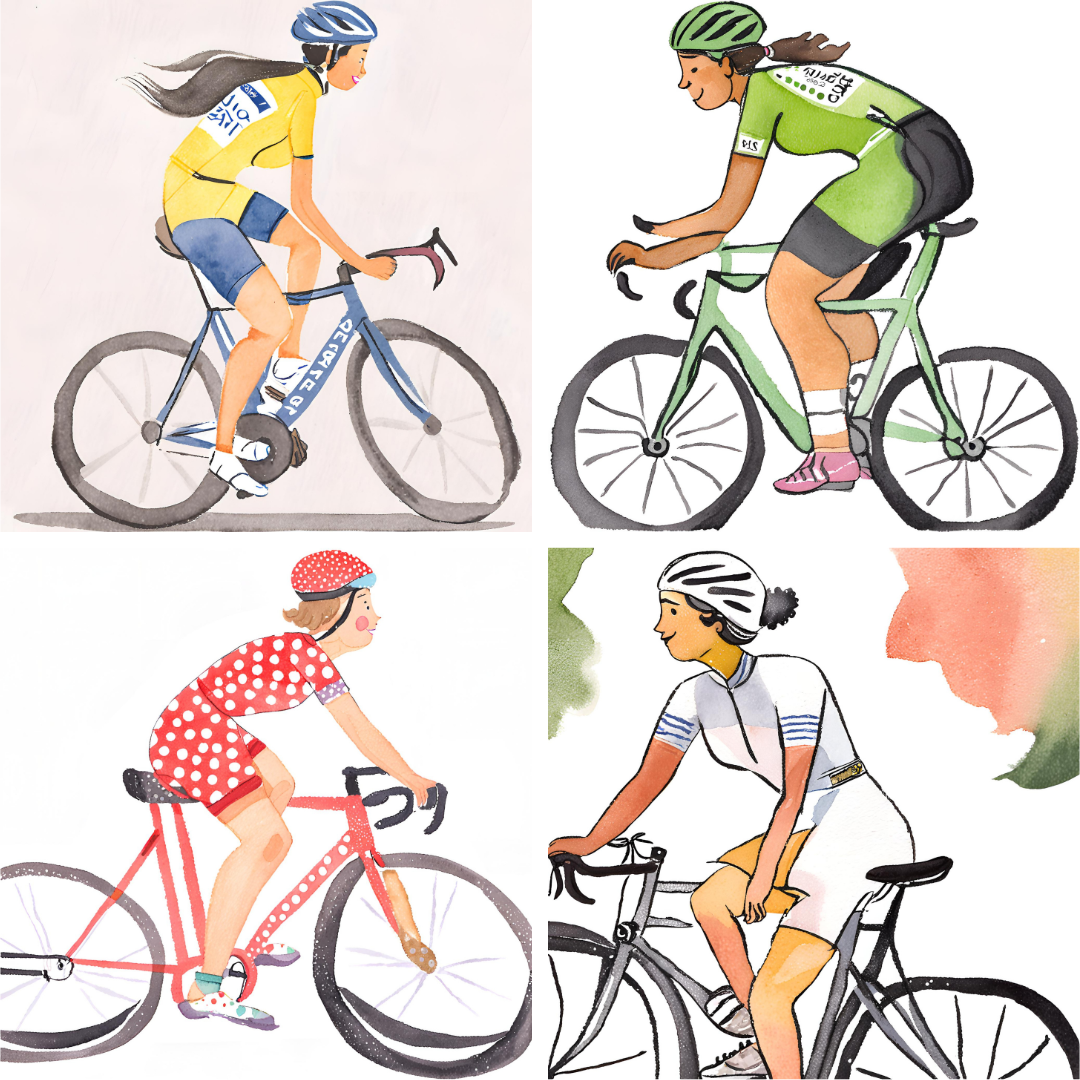The Tour de France, a gruelling three-week odyssey across the European landscapes, is a spectacle that transcends the realm of cycling. It's a cultural phenomenon, a test of human endurance and a vibrant showcase of athletic prowess. But amidst the peloton's relentless pace and strategic manoeuvres, a different kind of race unfolds – the race for the jerseys.
These coveted jerseys, worn by the leaders in various classifications, add another layer of intrigue to the Tour de France and its equally incredible sister event, the Tour de France Femmes. While the yellow jersey signifies the overall leader, the green, polka dot and white jerseys tell their own stories of triumph in different aspects of the race.
So, let's delve into the fascinating history and significance of these jerseys, both in the men's and women's editions of the Tour de France.
A Century of Tradition: The Birth of the Jerseys
The Tour de France, conceived by Henri Desgrange in 1903, initially featured no jerseys. However, by 1919, the race organisers felt the need to add an element of visual interest to identify the leader. Inspired by the yellow paper used by the newspaper L'Auto (a sponsor at the time), they introduced the now-iconic yellow jersey (maillot jaune).

The yellow jersey is the ultimate symbol of the Tour de France. The rider wearing it leads the general classification, having accumulated the fastest overall time across all stages, including time spent in intermediate sprints and climbs. The pressure to defend the yellow jersey is immense, especially during the brutal mountain stages. But the prestige attached to winning the Tour de France, often dubbed the "Holy Grail" of cycling, is unparalleled. Legendary cyclists like Eddy Merckx, Jacques Anquetil and Bernard Hinault have etched their names in history by conquering the yellow jersey. Get your very own VeloFlamingo yellow jersey HERE

The green jersey (maillot vert), was created in 1953 signifying the leader in the points classification, came into play after its first partner, La Belle Jardinière (a chain of clothing stores established in the 19th century) came on board. Points are awarded to riders who finish first, second, third and so on in intermediate sprints scattered throughout each stage, as well as in the final stage sprint. It's a race within the race, favouring powerful sprinters who can navigate the peloton's chaotic finishes and emerge victorious. Originally, the tour riders received penalty points if they did not finish with a high place, so those with the least points decided the eventual winner of the jersey! In 1959 however a reverse system was introduced and still remains in place and the competition has changed little over the many decades in the meantime. (Interesting fact - the only year that the green jersey WASN’T the green jersey was in 1968 and for that addition of the race it was changed to red to match a new sponsor that the tour took on board).
Peter Sagan holds the record for the most green jerseys in the Tour de France, while Marianne Vos won the green jersey in the Tour de France Femmes in 2022 and Lotte Kopecky in 2023.

The red polka dot jersey (maillot à pois rouges), awarded to the King of the Mountains (meilleur grimpeur), arrived in 1933 but the actual first polka dot jersey wasn’t awarded until 1975. The origin of the story here is a little hazy. Some believe it was inspired by a spectator wearing a red-and-white polka-dot scarf who cheered for the climbers, while others claim it was a last-minute decision by a race organiser based on leftover fabric.
Points are awarded based on the difficulty of climbs categorised by their height and gradient. Riders who conquer the most challenging ascents, pushing themselves to the limit on punishing inclines, are rewarded with this coveted jersey.
Richard Virenque and Richard Carapaz are some of the iconic male figures who have dominated the mountains classification in the Tour de France. Similarly, Demi Vollering, took the polka dot jersey in the 2022 Tour de France Femmes and Katarzyna Niewiadoma in 2023.

The final member of the quartet, the white jersey (maillot blanc), debuted in 1968. The maillot blanc hasn’t always been worn by the best young rider but by the leader of the “combine classification” (the rider who was ranked at the top across the board in the other classifications). But in 1975, the Tour organisers changed the meaning of what the white jersey was to represent and it became the jersey for the best young rider under the age of 26.
While each jersey represents a distinct specialty, the true magic unfolds when a rider contends for multiple classifications. Imagine the Yellow Jersey rider also sporting polka dots, signifying dominance in both the GC and mountain stages! This incredible feat, known as the "double," is a rare occurrence but a truly awe-inspiring spectacle.
Even more impressive is the "triple crown," where a rider holds the Yellow, Green, and polka dot jerseys simultaneously. Eddy Merckx, the legendary Belgian cyclist, achieved this incredible feat in 1969. While it's a testament to unparalleled versatility and strength, it's a feat rarely seen in modern cycling.
Beyond the Jerseys:
The Tour de France and Tour de France Femmes are much more than just jersey battles. Riders compete for stage victories, team classifications, and the prestigious combativity award, given to the rider who exemplifies the most aggressive and attacking spirit throughout the race. The jerseys, however, hold a special place in the hearts of fans and riders alike. They represent the pinnacle of achievement in specific areas, adding another layer of drama and intrigue to every stage.
Tour de France Femmes avec Zwift 2024 starts on 12 August and runs until 18 August, taking in the iconic climb of Alps d’Huez. Keep up to date with all the news HERE


